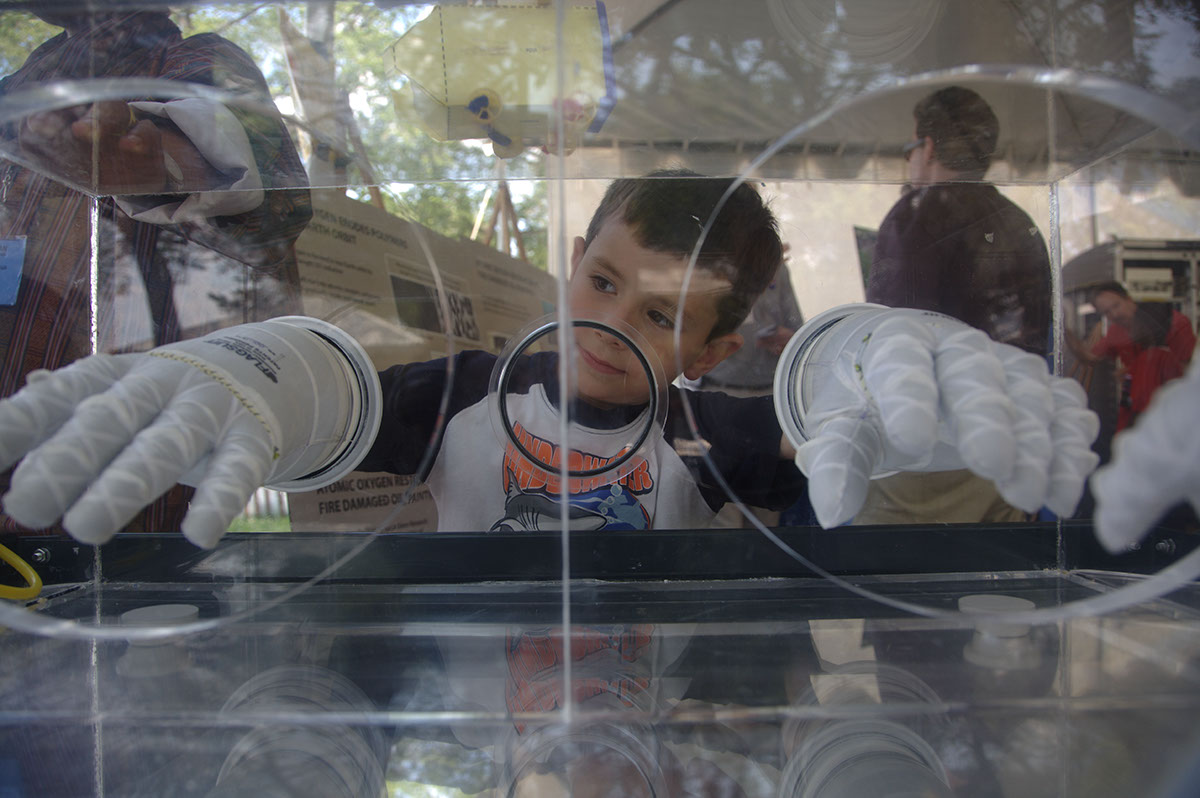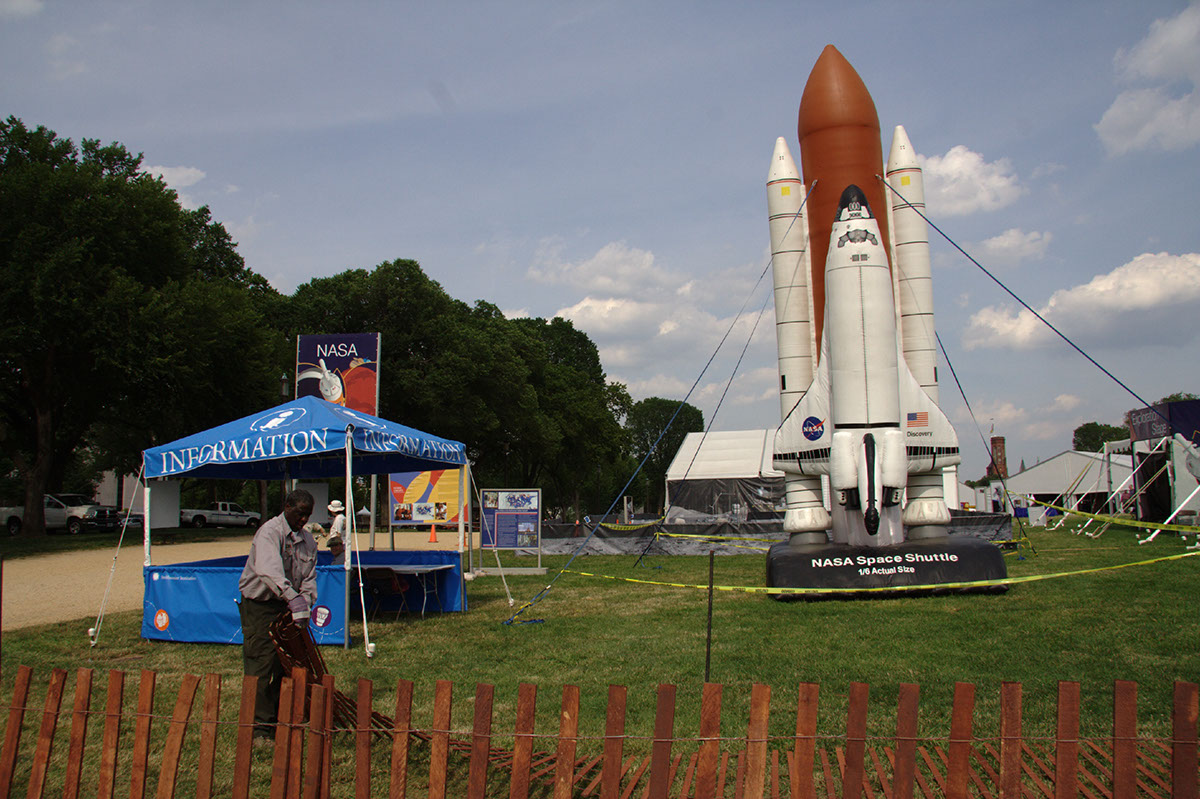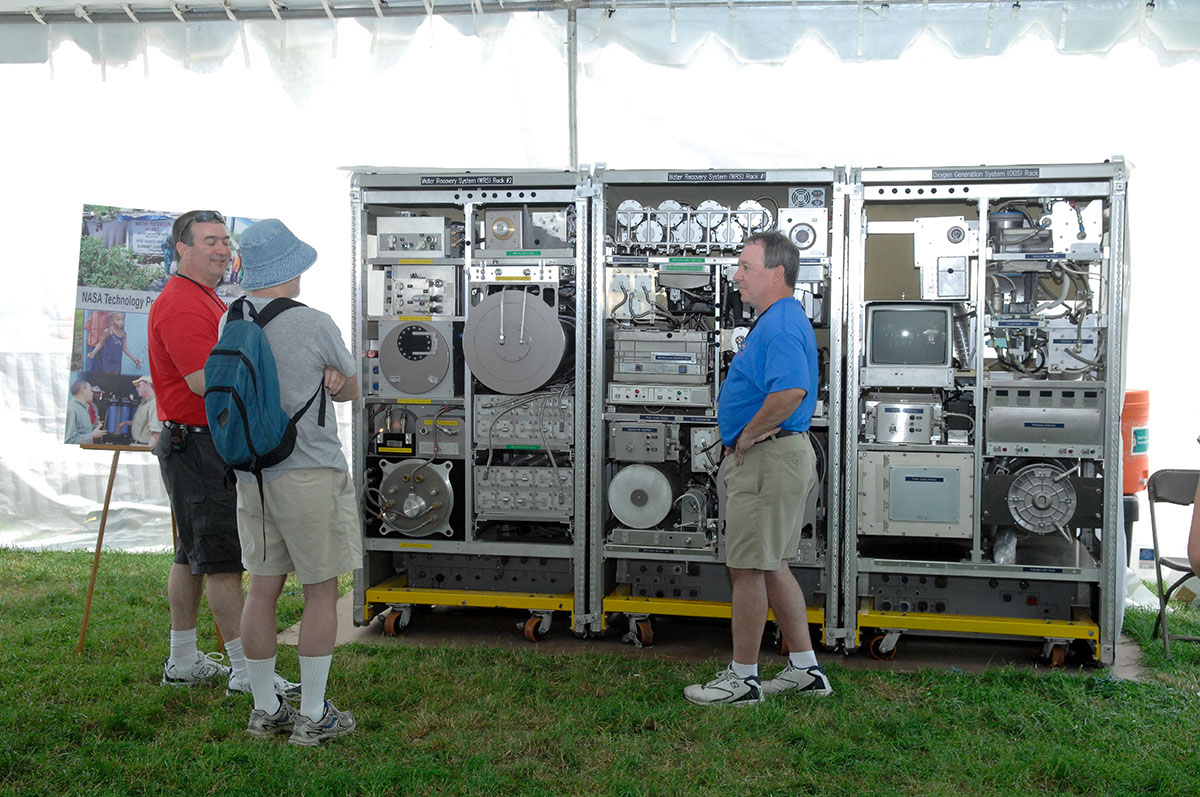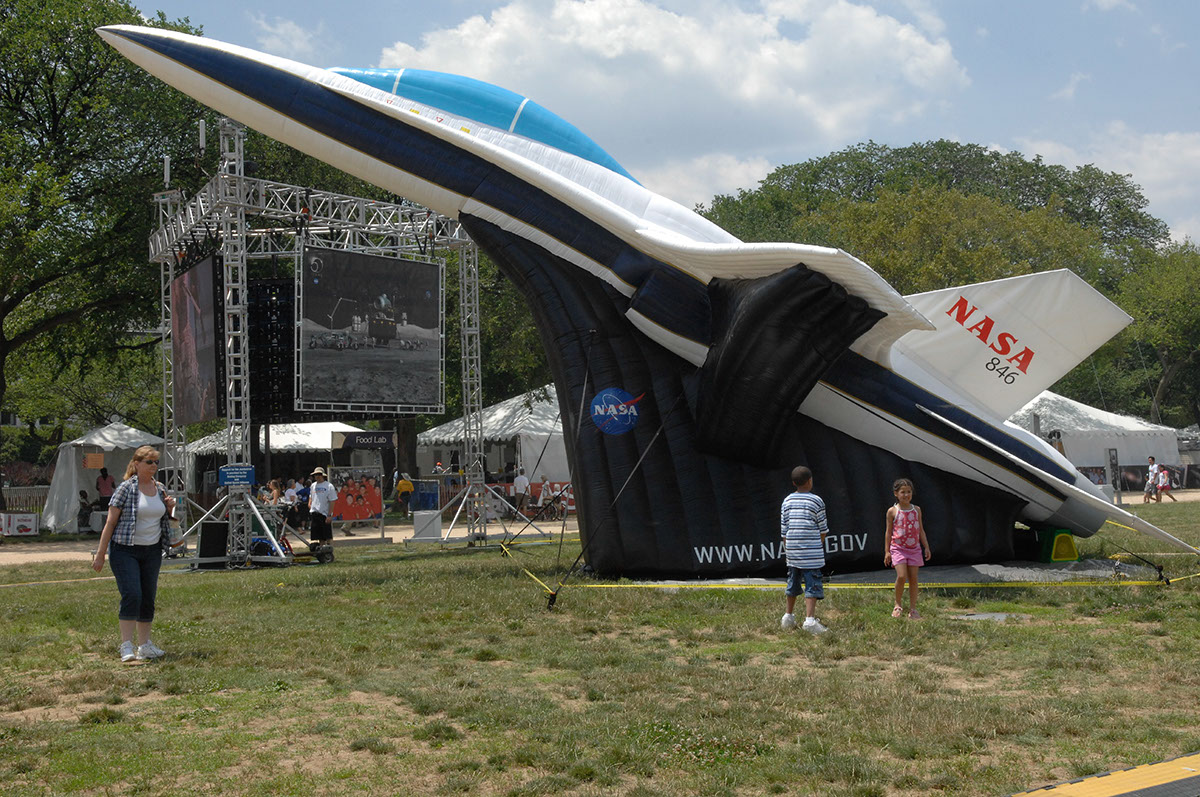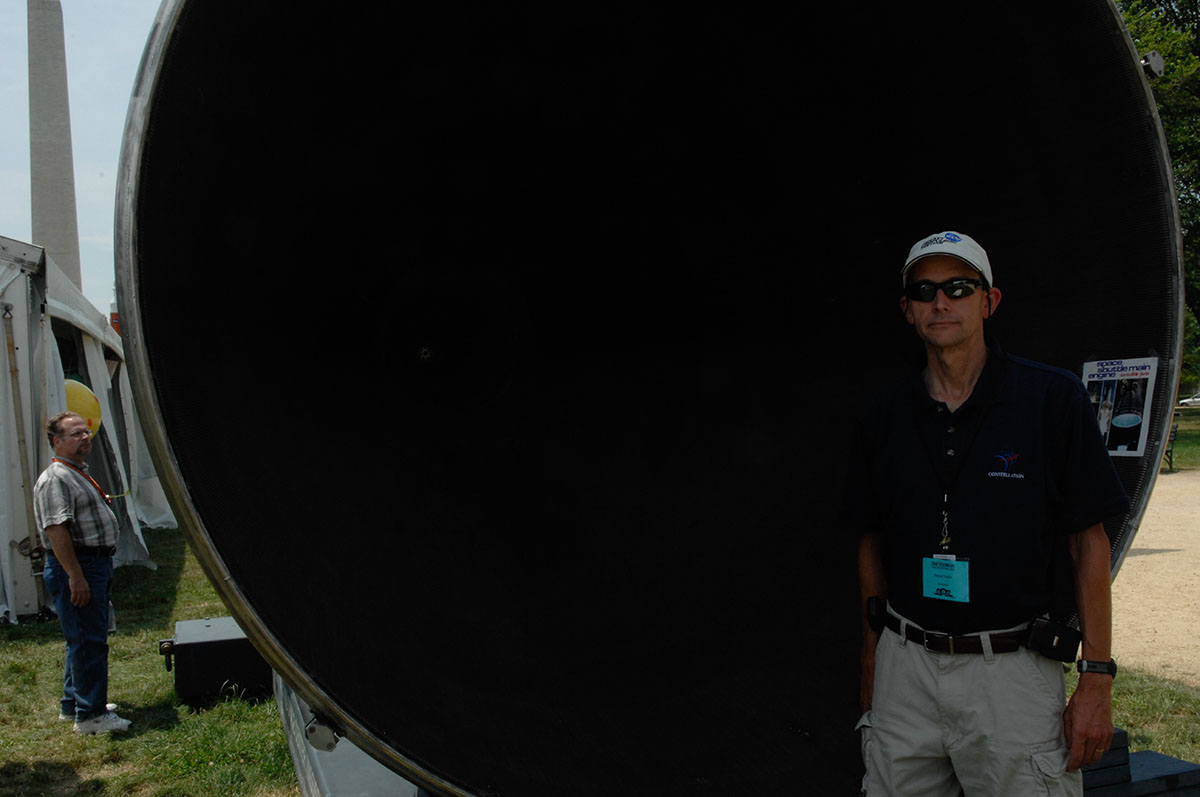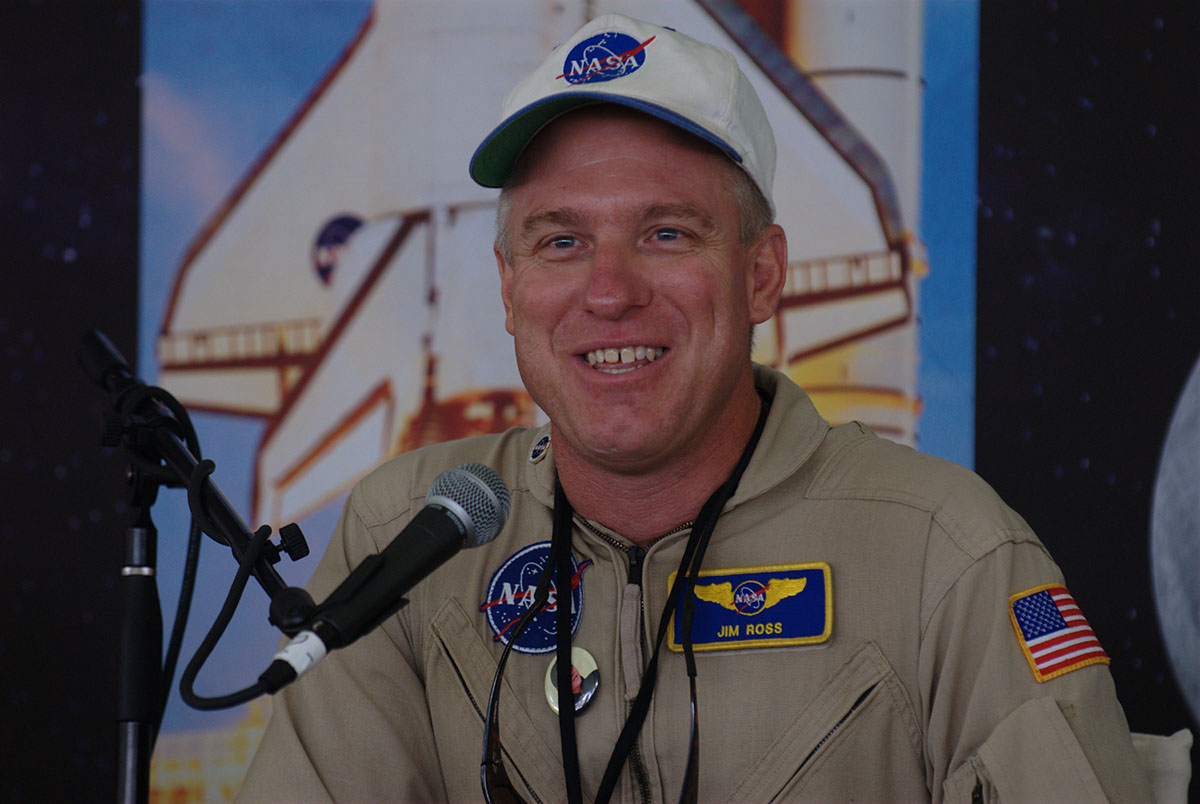NASA: Fifty Years and Beyond represented an unusual collaboration between the Festival and the National Aeronautics and Space Administration (NASA) on the occasion of the agency’s fiftieth anniversary in 2008. The NASA program provided a rare opportunity for the public to meet and observe the men and women whose skills, specialized knowledge, and codes of behavior mark them as a very distinctive example of occupational culture.
The tents on the Mall featured the following:
■ Aeronautics: air traffic-control designers, flight photographers and videographers, model makers, flightsuit technicians, test pilots, and others conducting research on aviation and aircraft;
■ Earth science: archaeologists, atmospheric scientists, meteorologists, plant pathologists, satellite imagery analysts, and others who investigate the earth’s surface, climate, and atmosphere;
■ Foodways: food scientists, nutrition experts, packaging engineers, and researchers who plan and develop the cuisine served onboard spacecraft;
■Future missions: aerospace engineers, robotics engineers, solar scientists, program managers, and others helping to plan missions to the moon, Mars, and beyond
■ Human space flight: astronauts, flight engineers,tile inspectors, microgravity experts, software engineers, solar array specialists, space suit technicians, and others who are involved with the Space Shuttle and International Space Station;
■ Propulsion: mechanicalengineers, operations managers, test systems engineers, and others who design and build the engines that power NASA spacecraft;
■ Space art: artists who use canvas, paper, and recycled materials (such as Shuttle tires) to document NASA’s work and missions; and
■ Space science: astrobiologists, astromaterials curators, astronomers, astrophysicists, heliophysicists, planetary geologists, and others conducting research in the vast reaches of space.
In addition, one tent was devoted to collecting oral histories, not only from the NASA participants, but also from members of the general public, to record their memories of NASA’s past as well as their visions for NASA’s future. During the ten days of the Festival, roughly 300 recordings were logged and another 200 note cards were posted on the bulletin board.
James Deutsch was Program Curator and Dorey Butter was Program Coordinator; Kim Stryker was Family Activities Coordinator. The NASA Coordination Team included: Gale Allen, Beth Beck, Claudette Beggs, Luis Berrios, Rosalie Betrue, Sallie Bilbo, Dawn Brooks, Stacey Brooks, Beth Brown, Fred Brown, Joshua Buck, Todd Cannon, Tara Clopper, Carmel Conaty, Leslee Cork, Anita Davis, David Defelice, Steve Dick, Wanda Dockery, Kristen Erickson, Michelle Ferebee, Debbie Gallaway, Steve Garber, Elaine Gause, Ed Goldstein, Mary Ann Harness, Robert Hopkins, Jim Hull, Winnie Humberson, Cheryl Johnson, Michelle Jones, Dave Lavery, Laura Lewis, Steve Lighthill, Rocky Lind, Dan Lockney, Bonnie McClain, Linda Matthews-Schmidt, Bryon Maynard, Cheri Miller, Ruth Netting, Nora Normandy, Louis Parker, Tom Powers, Debbie Rivera, Carla Rosenberg, Karen Rugg, Bette Siegel, Mary Sladek, Tony Springer, Pam Steel, Jim Stofan, Ann Marie Trotta, Janelle Turner, Bert Ulrich, Erika Vick, Katie Veal Wallace, Derek Wang, Joey Williams, and Dan Woodard.
The program was produced in partnership with the National Aeronautics and Space Administration (NASA). Jacobs Technology Inc. was a Donor to the program. Contributors were Lockheed Martin, Boeing, Northrop Grumman, and United Space Alliance.


